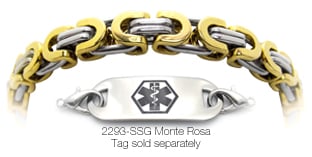In seconds, first responders need to know everything
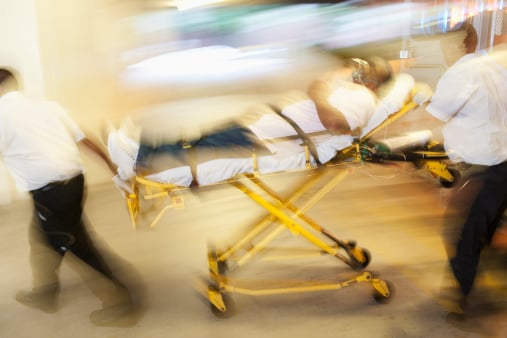
The fastest way to access all critical medical information is a medical ID bracelet.
Wrist First! Paramedics are trained by hospitals to always look first to your wrist.
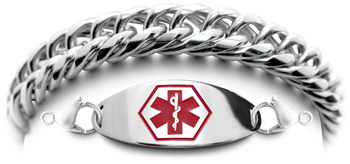
CARDIAC CONDITIONS, PACEMAKER,
STENTS AND TRANSPLANTS
Engraving Example:
ON COUMADIN
PACEMAKER-NO MRI
VVS-ON B-BLOCKER
ICE 000-000-0000
More issues to consider...
Blood thinners: Coumadin, Eliquis, Warfarin, Xarelto and Plavix are especially critical due to possible internal bleeding.
Heart transplants (TX) present complex conditions with immunosuppressant drugs that can react to emergency meds.
Special conditions: AFIB, CABG, CHF, LBBB, LVAD and MRI issues with Pacemakers require specific warnings.
See ID Abreviations
Say more, say it faster with shortcuts/abbreviations
Use "NO" if you can't take certain meds, so you might say "NO MORPHINE" if you are allergic to it.
PACEMAKER could be "PM" or “ICD” if you need the room on the ID tag.
For more help see: Abbreviations.
Abbreviating Conditions
1. Premature Ventricular contractions: PVC
2. Atrial Fibrillation: A-FIB
3. Ventricular Tachycardia: V-TAC
4. Paroxysmal Supraventricular Tachycardia: PSVT
1. Valvular Stenosis: HVD-STENOSIS
2. Valvular Insufficiency/Regurgitation: HVD-INSUFF
3. Bicuspid Aortic Valve Disease: HVD-AORTIC, and 4. Mitral Valve Prolapse: MVP
See more at: Abbreviations
Important Issues
MRI Safe Pacemakers: Always put the brand and model number of your ICD implant on your ID tag. The hospital must know the proper scan level which is the "T Rating" (Tesla Rating—0.5T to 3.0T). All "scannable pacemakers" require a lower power level for safety. Check with your doctor or manufacturer. Note: a technician from that Pacemaker company may have to be present and the pacemaker maybe reprogrammed after the scan.
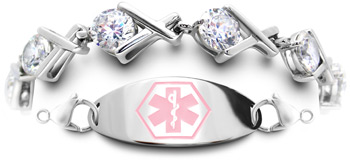
Medications to include
Hospitals need even more information such as:
No MRI must be on the ID tag if you have an older pacemaker. You can say "PACEMAKER-NO MRI"
New Scannable Pacemakers have restricted MRI's. These pacemakers must be turned off and then be scanned at a much lower power level. You also need to have the manufacturer and model number on the ID tag. "MRI-PACEMAKER"
For more help: Abreviations, Beginners, What to Say and How to Size.
90 million have heart disease. Less than half wear a lifesaving ID.
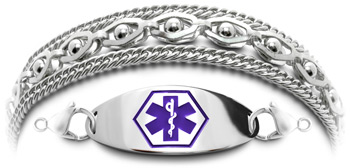
To solve this problem Medical ID Fashions offers the world's largest selection of handmade, custom sized bracelets that are all made in the USA.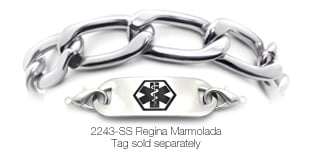
Heart disease basics:
Occurs when there is inflammation in or around the heart, or on the heart muscle itself.
What causes heart disease?
There are dozens of risk factors associated with developing heart disease, some that are modifiable and others that are not. Some modifiable risk factors to developing heart disease include tobacco use, diets high in fat and sodium, and leading a sedentary lifestyle because all of these choices can lead to build up of plaque on the arteries and put excessive strain on the heart. Having type II diabetes also increases your risk for developing heart disease. If the condition isn’t controlled well enough, it also can damage your blood vessels and lead to more plaque accumulation.
There are factors that can put people at risk for heart disease that aren’t within their control. Genetics play a role in developing heart disease, for example. High cholesterol, or hyperlipidemia, is a condition that can be hereditary and can cause blockages in the arteries from excess fats. High blood pressure, or hypertension, can also be a hereditary condition in which your heart has to work harder to pump blood through the smaller space. This constant excess pressure on the artery walls weakens them making them more susceptible to atherosclerosis. If someone in your family has had heart complications that also puts you more at risk of suffering from heart disease.

